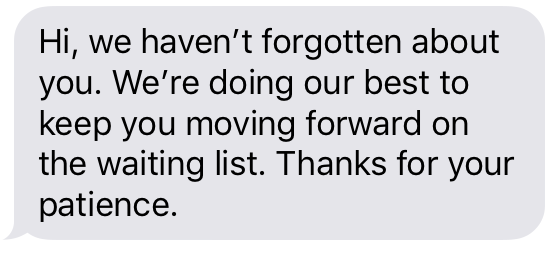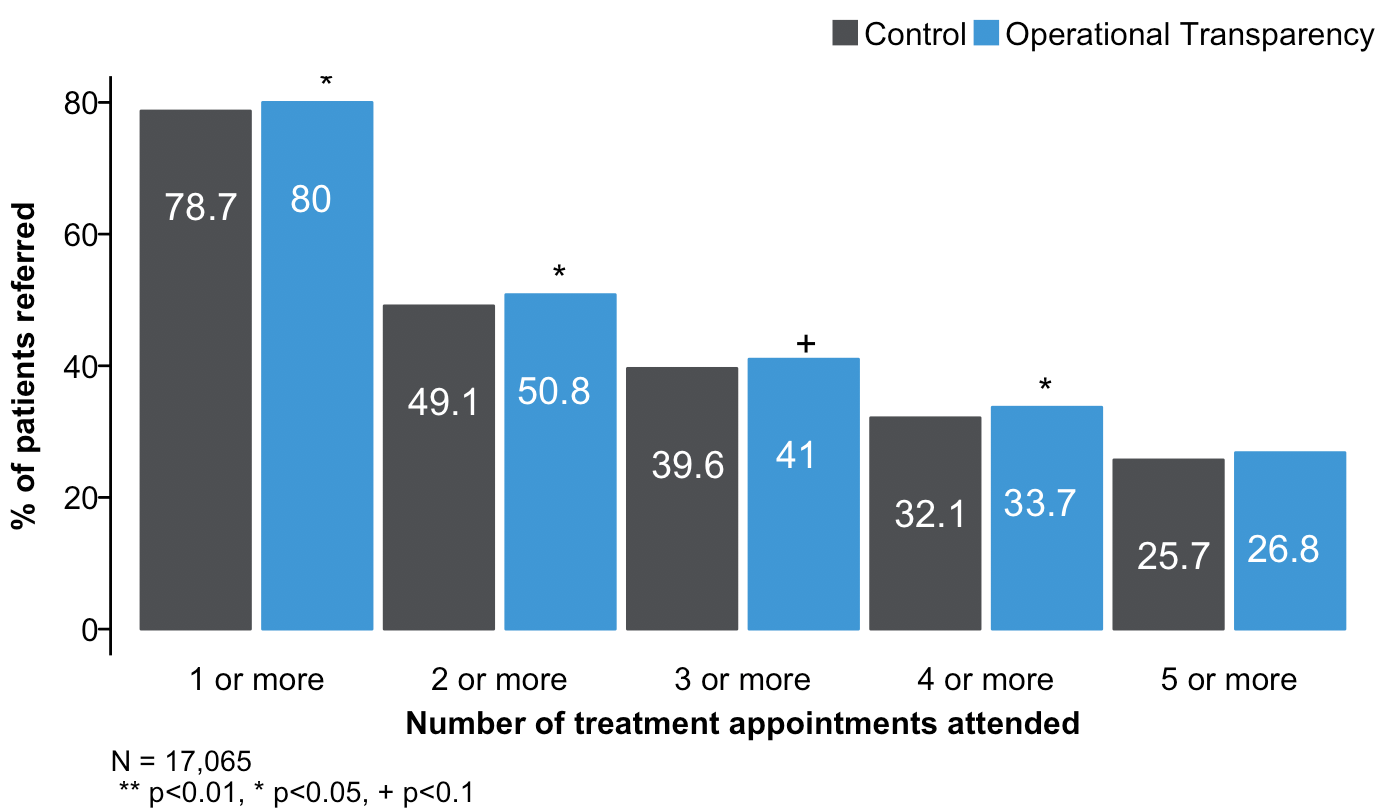Imagine you’re sharing a meal with three people you know.
It’s not something many of us are comfortable discussing but, statistically, one of you will have a diagnosable mental health problem in any given year. This social taboo is slowly lifting, in part thanks to increased investment in and visibility of mental health services in Britain, but there is a long way to go before we look after our mental wellness in the same way we do our physical health.
Incremental improvements that boost the use of existing services will help drive progress, which is why we’re especially excited to share what we’ve been working on in this area.
More and more people are accessing treatment
Of the 1.4 million referrals to IAPT in 2017/18, three in five people didn’t complete a course of treatment
Providing mental health services to all those in need is a huge challenge. The government has made great progress in ensuring more people with depression and anxiety receive treatment – for example through the Improving Access to Psychological Therapies programme (IAPT). But one of the big issues is that of the 1.4 million referrals to IAPT in 2017/18, three in five people didn’t complete a course of treatment.
Texting patients on waiting lists
With support from the Cabinet Office, we worked with Mayden, a provider of IAPT patient management software, to test whether sending a series of text messages to patients on IAPT waiting lists could increase patient engagement.
The text messages were based on the concept of ‘operational transparency’ which is the idea that showing people the effort which goes into a product or a service makes them appreciate it more.
In Boston, Massachusetts, researchers found that resident trust in government increased when the city openly shared information on its ongoing efforts to address problems, such as potholes and broken street lamps. Intuitively, highlighting delays and unfixed potholes doesn’t sounds like a recipe to improve faith in municipal services but it turns out that being transparent about the process and effort is better than staying silent.
We wondered if this idea might help in the case of IAPT where people often have to wait weeks or months to start treatment with very little contact or communication from services. We thought it was likely that some people may be dropping out because of this lack of contact during the waiting period, with patients having very little sense of what’s going on behind the scenes.
The text messages we designed provided regular updates from services, and reassurance that the service was working to keep the patient moving along the waiting list.

Text messages increased appointment attendance and reduced dropout
We found that patients who received our text messages were significantly more likely to attend two or more treatment appointments than those who didn’t, and were less likely to drop out. These patients also attended more appointments on average.

The impact
If scaled to 70% of IAPT services, this intervention could lead to an additional 14,000 patients a year completing two or more treatment appointments
Mayden provides services to approximately 70% of IAPT services in England, and we calculated that if this intervention were scaled up to all 70% of IAPT services, it could lead to an additional 14,000 people a year completing two or more treatment appointments. If implementation were automated, we would expect even greater impact.
Next steps
The NHS Long Term Plan commits to continue to expand access to IAPT services for adults and older adults with common mental health problems. Low-cost interventions such as ours could be considered as a way to improve efficiency of services.
This week is Children’s Mental Health Week. Low cost interventions like our text messages could be applied to other mental health services such as Children and Adolescent Mental Health Services (CAMHS). One in eight 5 to 19 year olds in England had at least one mental disorder when assessed in 2017, and the average waiting time for a routine appointment for psychological therapy in 2015/16 was 32 weeks. The NHS Long Term Plan commits to introduce new waiting time standards for all children and young people who need specialist mental health services. For now, we should explore how children and young people can be supported during this difficult waiting period.
In the meantime, why not talk to the children and young people in your life about mental health this week? Breaking the taboo is our problem, not theirs.




